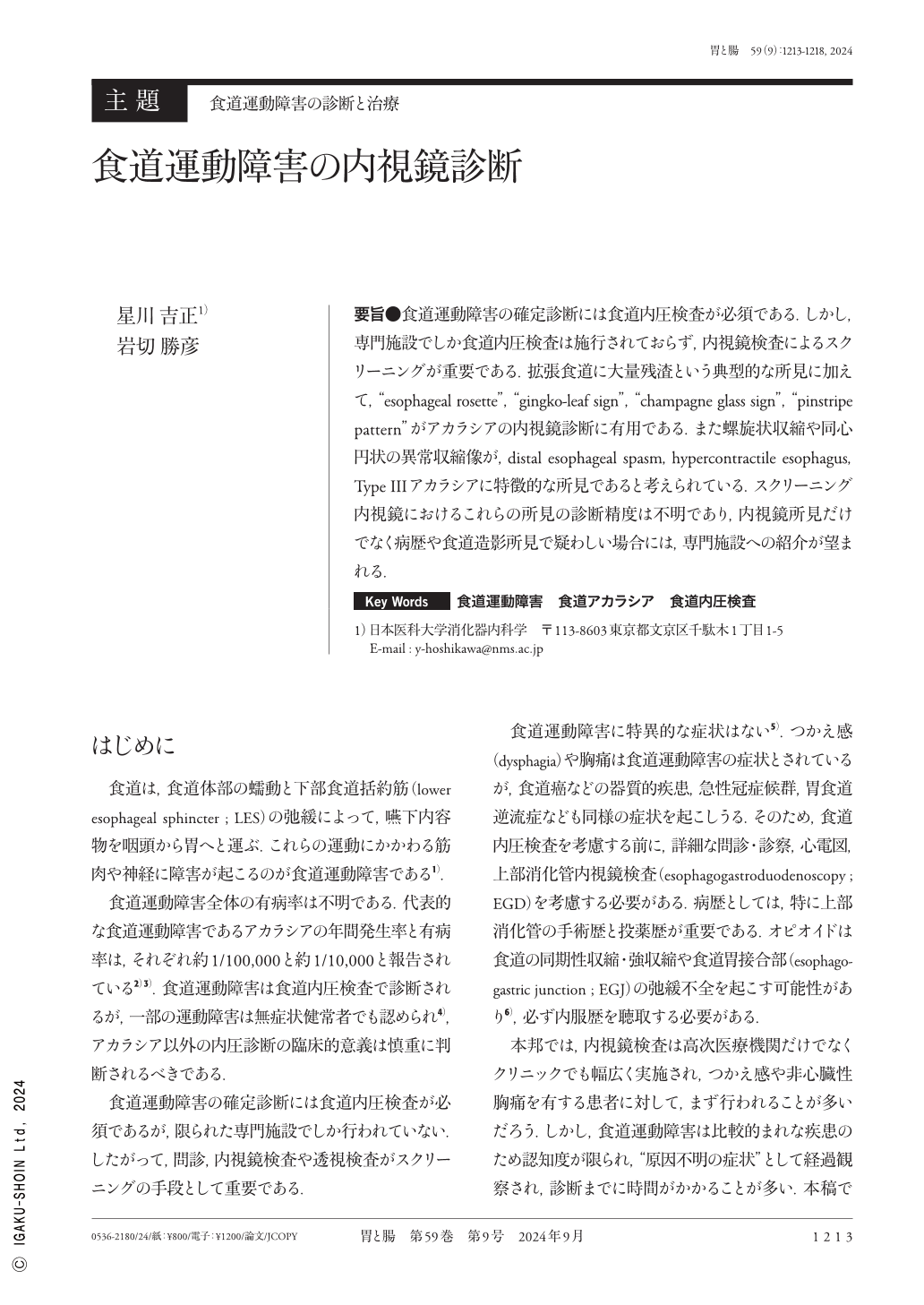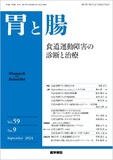Japanese
English
- 有料閲覧
- Abstract 文献概要
- 1ページ目 Look Inside
- 参考文献 Reference
要旨●食道運動障害の確定診断には食道内圧検査が必須である.しかし,専門施設でしか食道内圧検査は施行されておらず,内視鏡検査によるスクリーニングが重要である.拡張食道に大量残渣という典型的な所見に加えて,“esophageal rosette”,“gingko-leaf sign”,“champagne glass sign”,“pinstripe pattern”がアカラシアの内視鏡診断に有用である.また螺旋状収縮や同心円状の異常収縮像が,distal esophageal spasm,hypercontractile esophagus,Type IIIアカラシアに特徴的な所見であると考えられている.スクリーニング内視鏡におけるこれらの所見の診断精度は不明であり,内視鏡所見だけでなく病歴や食道造影所見で疑わしい場合には,専門施設への紹介が望まれる.
Endoscopy is crucial for the screening of esophageal motility disorders(EMDs). Esophageal manometry, an essential test for diagnosing EMD, can only be conducted at specialized centers. In addition to the conventional endoscopic findings of a large amount of esophageal residue in the dilated esophagus, specific findings such as “esophageal rosette,” “gingko-leaf sign,” “champagne glass sign,” and “pinstripe pattern” can be observed in patients with achalasia. “Corkscrew esophagus” and “multiple simultaneous contractions” are findings that are characteristic of distal esophageal spasm, hypercontractile esophagus, and type III achalasia. The diagnostic accuracy of these findings on screening endoscopy remains uncertain. If symptoms and endoscopic findings indicate the possibility of EMD, clinicians must refer the patient to a specialized center for further evaluation.

Copyright © 2024, Igaku-Shoin Ltd. All rights reserved.


